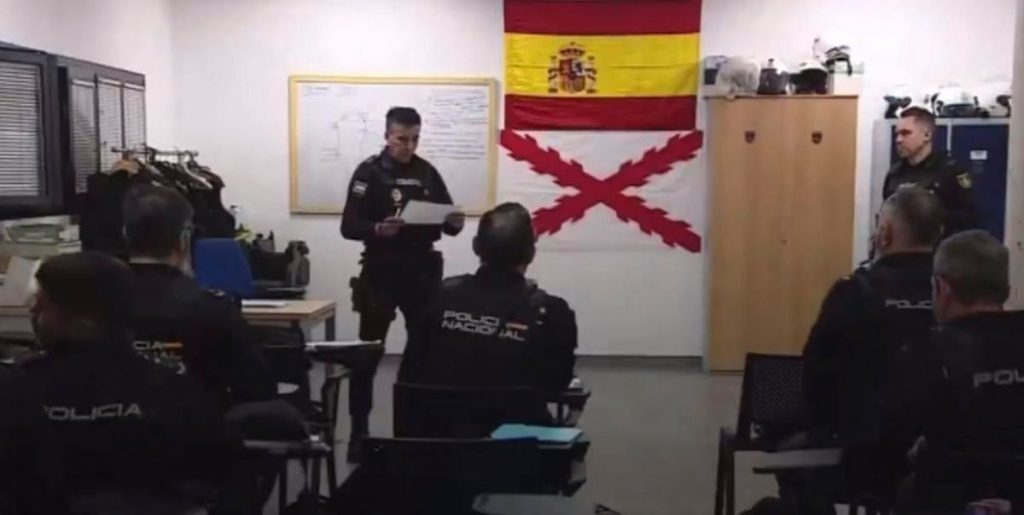The display of the Cross of Burgundy flag in a police station in Las Palmas was brought to light in a report by RTVE. The government admits to not knowing the circumstances surrounding the presence of this flag, which is associated with the far right, in the National Police station. The flag was removed immediately upon discovery, but an internal investigation by the Ministry of Interior has not been able to determine who put it up or when it was placed there. The flag was reportedly seized in a police operation years ago, but further details are unknown.
The existence of the Cross of Burgundy flag as part of the decor in the police station came to light after a report by RTVE showed images of police preparing for security measures during the Carnival celebrations. The flag was visible in a room where a police officer was giving instructions, and later speaking to a journalist with the flag in the background. This led to questions in parliament about the use of far-right symbolism in a police facility and the potential consequences for those involved in displaying such symbols.
The Cross of Burgundy flag has been used by some far-right groups in recent protests, along with other historical symbols like the double-headed eagle. Many participants in these protests were unaware of the significance of these symbols, which were used by traditionalist regiments during the Spanish Civil War. The flag originated with Felipe the Handsome, who married Juana I of Castile and incorporated it into Spanish flags. It was eventually removed from the national flag by Carlos III in the late 18th century to avoid confusion with other countries’ naval flags.
The Cross of Burgundy continued to be used in royal standards and by Franco during the Civil War, but was removed by Juan Carlos I and later by Felipe VI. Despite its association with the Franco regime, the flag remains a symbol of historical significance in Spain. The government’s response to the presence of this flag in a police station has been to launch an internal investigation, although no disciplinary action has been taken as of yet. The use of far-right symbols in official spaces raises questions about the presence of extremist ideology within law enforcement institutions.
The incident at the Las Palmas police station has sparked debate about the use of historical symbols and their political implications in contemporary society. The display of the Cross of Burgundy flag has drawn attention to the association of certain symbols with extremist groups and the need for vigilance in preventing the spread of such ideologies. The government’s acknowledgment of this incident and commitment to investigating the matter further demonstrates the importance of addressing the presence of far-right symbolism in public spaces.


